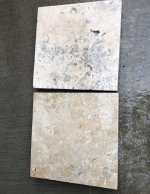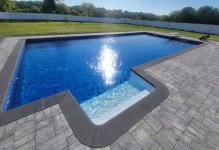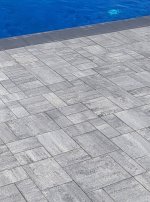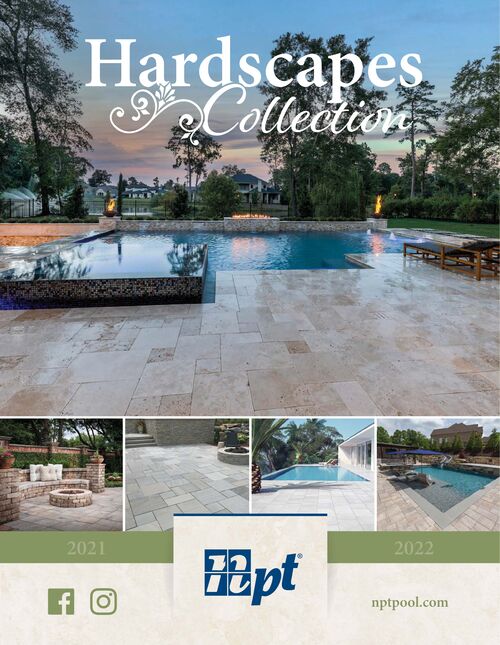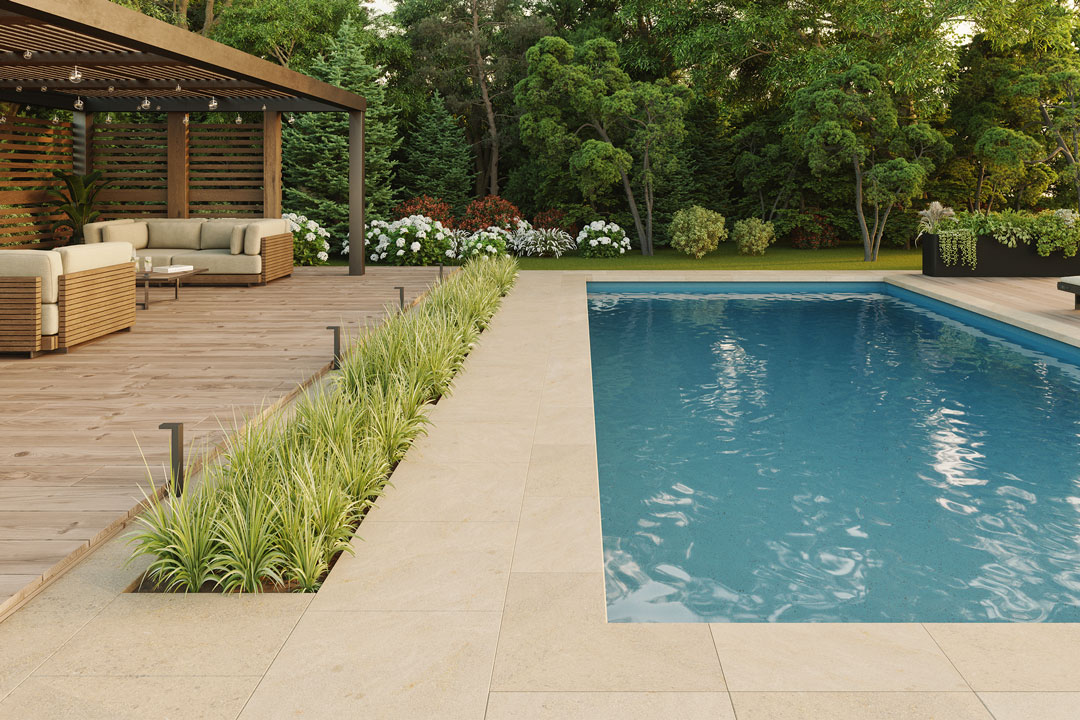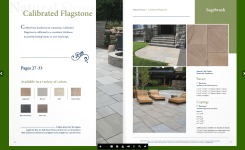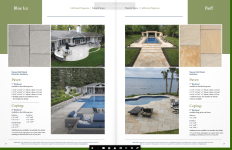In my opinion, a really high quality limestone can be a great choice.
Contact some local stone suppliers and schedule a site visit to see the actual stones.
You want a hard, dense stone.
A good stone is difficult to scratch.
Cheap stones scratch easily.
I don’t like travertine due to the holes because they trap dirt and it looks ugly.
Talk to the experts at the stone place about what you want as far as finish, texture, slip resistance, heat characteristics etc.
Order from the stone yard directly and inspect the lot when it comes in to make sure it is exactly what you were expecting.
Another good choice is a really good sandstone.
For sandstone, the most durable is a quartzitic sandstone, which consists of interlocking quartz grains, cemented by silica.
You should inquire about the strength of the sandstone, which a good supplier should provide.
The stone’s data sheet should provide details about the compressive strength, the flexural strength, the porosity, the density, the hardness, the wet and dry Static Coefficient of Friction etc.
ASTM C616 classifies Quartz-Based Dimension Stone into three categories: Sandstone (Type I), Quartzitic Sandstone (Type II), and Quartzite (Type III). The stone is classified by the following physical properties: absorption by weight, density, compressive strength, modulus of rupture, and abrasion resistance.
Sandstone is the weakest. I think that regular sandstone is not a good choice in most cases. It tends to be too weak and does not hold up well.
Quartzitic sandstone is very strong and durable. It is composed of grains of Quartz bonded by Silica. I think that the best choice in most cases for decks is a quartzitic sandstone. It has a good texture, a good slip resistant surface, and very good weatherability.
Quartzite is stone that was originally sandstone but has been heated and pressurized in the earth into a harder and more durable stone than sandstone. During heating and pressurization, the grains of sand are melted together. This tends to give quartzite a slicker surface. In cases of water immersion, especially with a salt pool, I think that a true quartzite is usually a better choice.
Tennessee Crab Orchard Stone is usually a quartzitic sandstone. It is sometime referred to as a quartzite, but I don't think that it is a true quartzite. Many stone suppliers will be able to tell you the physical properties and composition of the stone, and to which classification the stone belongs. If there is any question, you might want to consult with a stonemason.
You want a denser stone that has less open pore space. You should get a stone with a density of at least 150 pounds per cubic foot and a water absorption by weight of not more than 3%. Water absorption can cause freeze/thaw damage, and creates more damage from salts and other chemicals.
I converted my pool 2 years ago to a Saltwater pool. I keep the salt between 2800-3000 ppm. I keep the CSI slightly negative, and I run about 30-50 ppm Borates. I am not experiencing any more (or less) sandstone/flagstone deterioration than before converting. My "flagstone" has been...

www.troublefreepool.com


